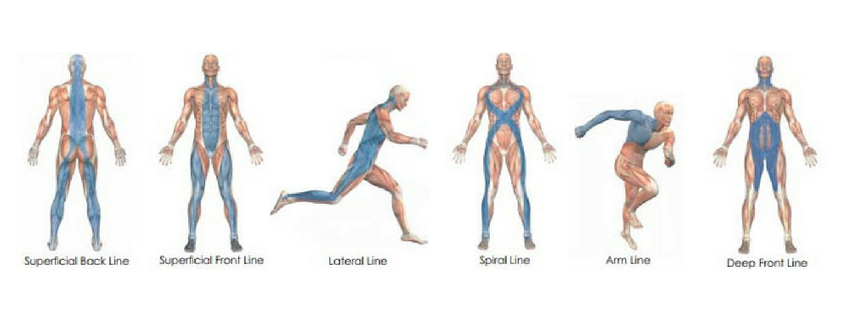At its core, fascia is a body-wide interconnected tensional network of tissue. A large misconception is the fascia only connects and covers tissue in the body; however, muscles can transmit up to 40% of their contraction force via facial connection. Additionally, fascia connects muscles to their surrounding tissues which can even include atagonist muscles. Fascia does follow Davis’s law, soft tissue can be molded based on imposed demands by the body. Because fascia surrounds and connects all tissues, this allows us to understand the body at a very different level.
In most kinesiology, biology, anatomy, physiology, exercise science classes gloss over one of the most important factors about the human body: the human body is a tensegrity model.

A tensegrity model, seen in the image, depends on tension to create a model where poles and ropes can be used to create a fully stable structure. In other words, tension within the model creates the stability necessary for the structure to stand. A special property of tensegrity models is viscoelasticity: they become stronger when more tension and compression becomes greater. The application of tensegrity to biological structures is therefore an easy association to make; the bones, muscles, tendons, and ligaments are an interconnected structure relying on constant tension to remain stable. This concept is called biotensegrity, and it applies to the human body from the smallest cell to the large intestine.
Because the body is a biotensegrity unit, the human body can freely move in any direction as long as tension is applied to the system. Fascia is how the tension and force is absorbed and redistributed throughout the system. Fascia needs to be trained in order to redistribute the tension efficiently. Fascia connects surrounding muscles which can span the length of the body, so repetitive movements can teach the body where to create more fascia and the most efficient path to distribute it. Fascia connects muscles in chains, and tension anywhere along these lines can contribute to strengthening the overall system.

There needs to be loading, or stretching of the facial lines before being able to redirect the tension to another movement in the body. This stretching of fascia can be used to explain natural and sport specific movements.
Cross-crawl motion defines movement within the body, and the main reason is fascia. When the left leg is driven back while walking and the right arm comes forward, the body is stretching and releasing tension across several facial lines. In strength and conditioning, this stretch and release of tension is called the stretch shortening cycle (SSC).

Typically, this diagram is used to explain how eccentric, isometric, and concentric muscle actions take place. Closer examination of the diagram explains how important fascia is for movement. In trained athletes, the amortization phase of the stretch shortening cycle takes place in 100 milliseconds. During the amortization phase, the fascia is taking the built up tension and redistributing it to the areas where the elastic recoil, or release of energy will take place. Once again, think about walking. Once the left leg comes back, there is a slight pause before the system redistributes the energy and brings the leg naturally forward in a slight recoil. When the leg is driven back, the fascia is stretched. When the leg naturally comes forward from the built up tension the fascia is recoiling.
Application to Baseball
The stretch is normally talked about in hip shoulder separation. The goal of hip shoulder separation is to create a facial stretch from the stride foot to the throwing shoulder and load the body up with energy before ball release. This also happens in hitting during the load phase. However, simply driving the body back and attempting to create tension is not the answer. Fascial tension is created naturally, and inefficient movement does not create tension. The way to create fascial tension is to wait. As simple as it sounds it is true, wait for the stretch and pull of fascia and then accelerate into the elastic recoil. The second aspect that fascia plays in baseball is in the deceleration of both throwing and hitting. The terms used to describe this is the recoil and scissor, respectively. The deceleration of both throwing and hitting stretches the posterior fascial chain’s of the body. Throwing places a large amount of eccentric, or fascial stretch, stress on the posterior throwing shoulder. In pitchers this results in a recoil of the throwing arm, which is can now be observed as the release of energy from the fascia. This is something that almost all pitchers who throw gas perform when on the mound. The scissor happens because of the same premise, the trunk decelerates the bat and creates posterior stretch. The most natural action to follow such a movement is a scissoring motion with the back leg.
Takeaways
- Fascia is key for throwing hard, you must use is
- Build up tension and release it
- Recoiling is a natural part of baseball, even cueing it can lead to velocity gains
- Fascial stretch cannot be forced, try to take all the tension out and then recoil
- Writing this article made my head hurt
- I will never fully understand the human body
Fascia is key, 95 or Die